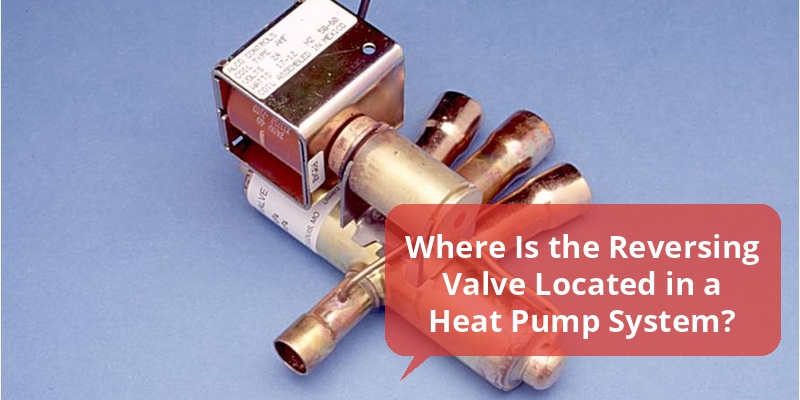Heat pumps are versatile HVAC systems that can both heat and cool a home by reversing the refrigeration cycle. The reversing valve is a critical component that controls this function, allowing the system to switch between heating and cooling modes. Understanding the exact location of the heat pump reversing valve helps homeowners, technicians, and DIY enthusiasts diagnose issues and perform maintenance effectively.
| Component | Location in Heat Pump System | Function |
|---|---|---|
| Reversing Valve | Outdoor Unit, Typically Near the Compressor | Switches Refrigerant Flow To Alternate Heating and Cooling Modes |
What Is a Heat Pump Reversing Valve?
The reversing valve is a four-way valve inside a heat pump’s outdoor unit that changes the direction of refrigerant flow. In cooling mode, it directs refrigerant in one path, and in heating mode, it switches to the opposite path. This valve enables the heat pump to work efficiently for both warming and cooling without needing separate systems.
Without the reversing valve, a heat pump could not alternate between heating and cooling effectively.
Typical Location of the Reversing Valve in a Heat Pump
The reversing valve is usually found in the outdoor unit of the heat pump. It is mounted near or directly on the compressor and the refrigerant lines. This positioning is logical because it needs to control the flow of refrigerant entering and exiting the compressor.
Specifically, the valve is often connected to the service ports and the refrigerant piping close to where the compressor discharges and where the refrigerant enters the condenser or evaporator coils.
How to Identify the Reversing Valve in Your Heat Pump Unit
This component looks like a metal block with four copper pipes attached, which differentiates it from other parts. It will sometimes have a solenoid coil and an electrical connector for the reversing valve actuator.
- Look for a four-pipe connection near the compressor.
- Check for electrical wiring attached to a coil on the valve.
- The valve is generally larger and more complex than standard access ports in the refrigerant lines.
Function of the Reversing Valve in the HVAC System
The reversing valve toggles the heat pump between heating and cooling by rerouting refrigerant flow:
- In cooling mode, the valve routes hot refrigerant outside to be expelled, allowing the indoor coil to act as an evaporator.
- In heating mode, it reverses the flow, pushing hot refrigerant inside to warm the home, turning the indoor coil into the condenser.
This dual functionality improves energy efficiency and reduces the need for multiple pieces of equipment.
Common Issues Related to the Reversing Valve Location
Because the reversing valve is located outdoors near the compressor, it is exposed to weather and potential wear. Common problems linked to this location include:
- Corrosion from exposure to rain and salts
- Physical damage from debris or impact
- Electrical faults due to wiring exposure or coil failures
Regular inspection and maintenance are essential to ensure reliable operation when the valve is exposed outdoors.
How Technicians Service the Reversing Valve
Servicing the reversing valve involves accessing it outdoors, typically near the compressor:
- Technicians first locate the valve by following refrigerant lines and identifying the four connections.
- They check the solenoid coil for proper electrical function, sometimes testing with a multimeter.
- In the case of valve failure, replacement usually requires evacuation of refrigerant and disassembly of connected piping.
Due to its location, reversing valve repairs are best handled by trained HVAC professionals to ensure safety and system integrity.
Tips for Homeowners: Locating and Caring for Your Heat Pump Reversing Valve
- Locate your outdoor heat pump unit and look near the compressor for the valve with several copper tubes connected.
- Keep the surrounding area clean and free of debris to prevent damage.
- Schedule regular HVAC maintenance to inspect electrical connections and check for leaks or corrosion.
- Report unusual noises or inconsistent heating/cooling performance to a professional promptly.
Understanding this key part’s location can help homeowners better communicate issues with HVAC technicians and maintain system efficiency.
Summary Table: Reversing Valve Location and Key Features
| Feature | Description |
|---|---|
| Location | Outdoor Heat Pump Unit, Near Compressor |
| Appearance | Metal Block with Four Copper Tubes and Solenoid Coil |
| Function | Switches Refrigerant Flow for Heating and Cooling Modes |
| Common Issues | Corrosion, Electrical Failure, Physical Damage |
| Maintenance | Regular Inspections, Electrical Testing, Cleaning |
